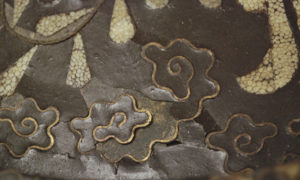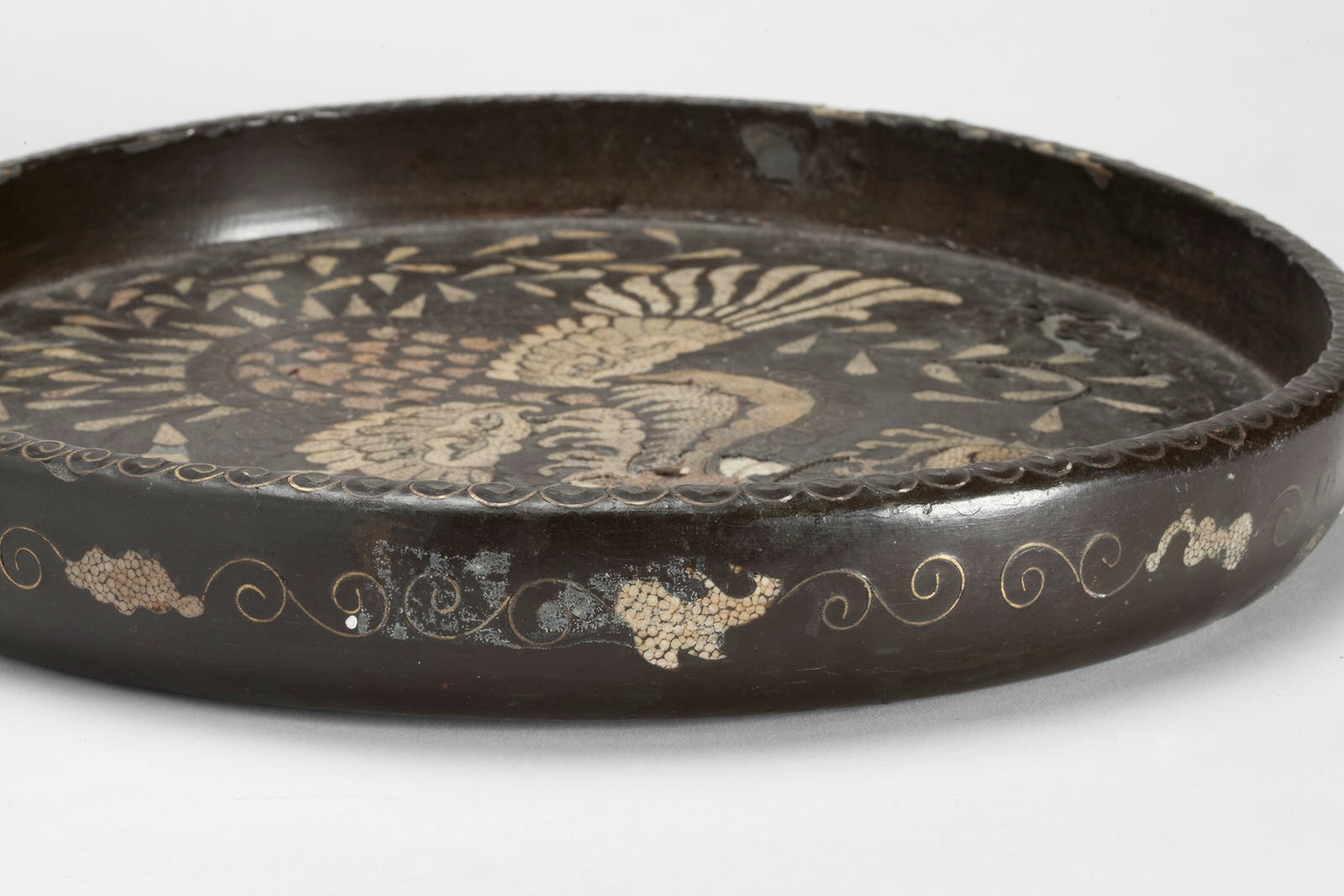This conservation project is generously supported by the Overseas Korean Cultural Heritage Foundation.
For an exhibition of Korean lacquered objects, creative solutions were found to replace missing inlay materials. Ray skin, one unusual inlay material, presented an interesting challenge.
Four Korean lacquered objects in the Asian Art Museum collection are currently undergoing conservation treatment in the Objects laboratory. They are decorated with a dizzying array of materials: mother-of-pearl, tortoiseshell, horn, brass wire, golden flakes, and ray skin inlays.
The objects being treated are a pedestal table, a phoenix table, a phoenix tray, and a folding screen, all made during the later stages of the Joseon dynasty (1392-1910). The decorative elements used on the objects follow a long Korean tradition of creating patterns on lacquered surfaces using inlaid elements.

Originally, the surfaces of the objects were whole and complete. In their present condition, many of the inlay elements are lost. The losses reveal the lacquer ground in some areas, or the textile underlayer in others.
The many losses were not structural problems, but they made it hard to interpret the original design. For this reason, the losses were filled with suitable replacement materials. Replacing the ray skin was a particular challenge because of its thinness, color, and the slight texture present.
To fill the losses in the ray skin, several methods were tested. Because the original is extremely thin, applying any commonly used fill compound would require carving and shaving down the fill to make it level with the object’s surface. This action could endanger the surrounding lacquer.
Paper fills were found to be the ideal material. Acid-free paper provided the proper thinness of material required, met the necessary archival qualities, and could be colored to match each individual loss.
The first method tested for making the paper fills was to use print-outs from digital photographs of the existing ray skin. However, it was difficult to match the color of each individual loss. Additionally, the size of the ray skin scales varies from color to color and this proved a formidable obstacle in terms of repeatability.
Ultimately, the paper fills were made by hand. A tracing of each loss was cut out of the paper. It was then colored and textured to match the shade and slight texture of the ray skin. The paper fill was then attached to the surface of the object using a conservation-grade adhesive. The fill can easily be removed, if need be, in the future. Once set into place with an adhesive, the fills were further treated to meet the required gloss.
The fill materials can easily be detected under long-wave ultraviolet induced visible fluorescence (UVA), should they need to be removed in the future. This has the added benefit of allowing future scholars, who will study the work, to see clearly what is the original and what is the replacement material. The fills made for other losses, such as the lacquer and horn, are similarly detectable and removable. The resulting fills now blend into the surrounding surface, and the decorative pattern is fully legible again.
This video chronicles the analysis and treatment steps described above.

Korean lacquered objects from our collection
Frick, Patricia and Soon-Chim Young, ed. Korean Lacquer Art – Aesthetic Perfection. Munich: Hirmer Publications. 2012.
This conservation project is generously supported by the Overseas Korean Cultural Heritage Foundation.